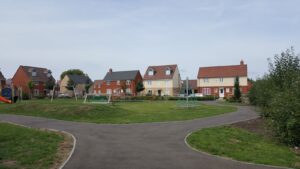How Northern Ireland’s social housing has been undervalued
Northern Ireland’s heritage is understandably something to be handled with sensitivity.
But eleven years on from the Good Friday Agreement and communities across Northern Ireland are at last ready to tell their story – and more willing to listen to other people’s version of events. In an age of reconciliation, some of the physical relics of the troubles are becoming a vehicle for telling these stories to people both within and outside of province.
But the focus on the last three decades of the 20th century often overlooks another crucial period in the province’s history. Some architectural historians argue that it is time to reexamine the built legacy of the discredited devolved government, which ran Northern Ireland until the early 1970s. And last week, I heard a Scottish architectural historian make this case at a international symposium on conserving modern public buildings.
Dr Miles Glendinning of Edinburgh College of Art, told the event in Melbourne that while the devolved Unionist government was pursuing the sectarian policies that sowed the seeds of the troubles, its civil servants embarked on a vast programme of social building.
This began with a mass housing programme in the 1950s and expanded into a national planning strategy, including the building of a new University. Such costly progressive policies were sold to politicians (steeped in the thrifty Presbyterian culture of Ulster’s Protestants) as ‘strengthening the Union’ by copying Britain’s popular welfare state.
The civil servants also had to win over others to achieve their goals – one rehousing programme was secured only through winning the backing of Catholic priests. In the end, the programme was overtaken by events. Sectarian conflicts meant that the vision of the new town of Craigavon was never fully realised and that the later phases of the University of Ulster’s development were abandoned.
But Dr Glendinning argues surviving relics of Northern Ireland’s postwar rebuilding awaits a new appreciation in today’s era of reconciliation. He notes that there are many examples of buildings worth listing – not least Northern Ireland’s low rise 1960s housing developments, which diverge dramatically in style from the high rise projects elsewhere in the UK.
Dr Glendinning hopes that local conservationists will find friends in the Dublin chapter of international heritage organisation Docomomo. After that, it will be case of winning over the public – and this could be challenging in a society keen to look forward to a brighter future.















